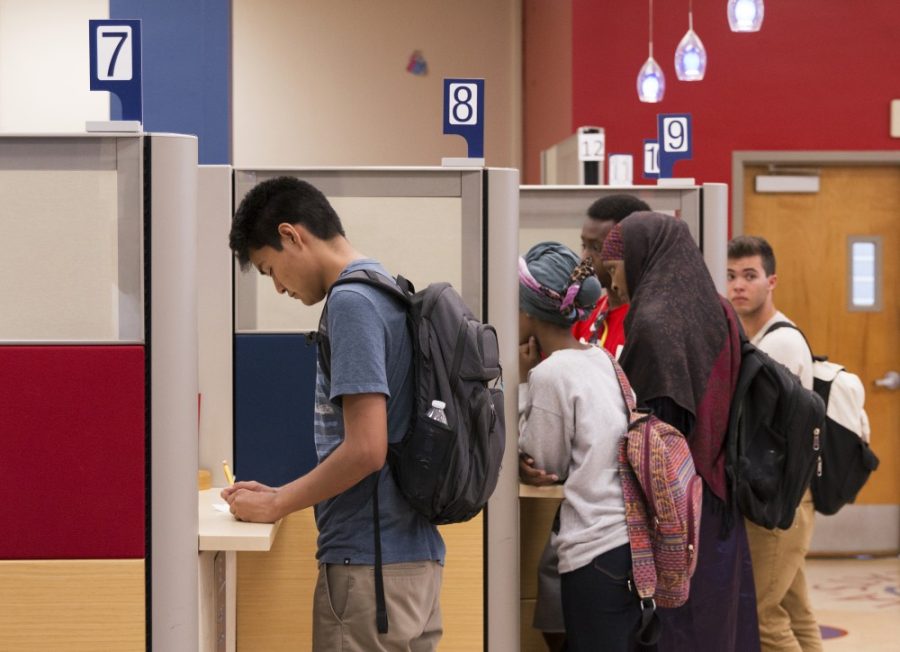I will have paid $8,000 in program fees and differential tuition alone to graduate from the University of Arizona with Honors and a double major — and I am not unique.
Program fees are different from the suite of mandatory fees UA students pay because they only apply to students in a particular major or pre-major. Similarly, differential tuition is paid by students within a particular college in addition to their university tuition.
Around 12 years ago, the nation faced an economic crisis and Arizona began the largest cuts in state funding for higher education in the country. Many UA programs and colleges turned to students in the form of new program fees and differential tuition to stay afloat, even as the UA raised in-state tuition by more than 20% three years in a row.
In 2019, the UA no longer faces the existential crisis of campus-wide layoffs, deferred maintenance and shuttered academic programs. Yet these new costs for UA students remain and continue to grow.
These fees have become part of a set of policies that insulate UA’s administration from criticism, preventing the development of proposals to keep higher education affordable for Arizona students.
RELATED: OPINION: We need more polling places on campus
The groundwork that set the stage for the proliferation of program fees and differential tuition was laid in the aftermath of 2003.
The Arizona Board of Regents, which governs Arizona’s three public universities, voted to raise UA’s in-state tuition by almost 40%. A group of students sued the board in 2003 for violating Arizona’s constitutional requirement to keep university tuition “nearly as free” as possible.
While the board won a victory at the Arizona Supreme Court, it went on to formalize differential tuition rules in 2006 and oversaw the rapid expansion and introduction of mandatory fees linked to campus facilities. This trend can be traced to UA’s recent and contentious introduction of an athletic fee.
UA’s former president Peter Likins argued the introduction of these fees helped the UA keep tuition increases for the majority of current and new students as low as possible. The fees allowed the university to align student tuition with the individual costs of education within individual programs.
This free-market approach, though, creates higher barriers to entry that can drive students from disadvantaged backgrounds away from programs with additional fees, hurting access and diversity.
While all program fees are required to provide some fee waivers, the bar to obtain one is high. By only examining unmet financial need according to the FAFSA, many students in need fall through the cracks.
When Likins argued in favor of these fees, he had in mind UA’s business, engineering and architecture programs, which generally offer students high-salaried employment after graduation.
Today, UA’s program fees and differential tuition affect many more students, from journalism and political science juniors to neuroscience and cognitive science freshmen. Not all these subjects offer the same guarantee that Likins saw for engineers.
I briefly served on the School of Government and Public Policy’s Student Governance Board, which helps oversee the the spending of SGPP’s student program fees.
SGPP’s fee revenue primarily paid the salary of some professors. Before SGPP received the fee revenue, the UA collected a portion of the fee as part of an administrative service charge.
RELATED: OPINION: UA party culture is for the selected few
UA programs and colleges are limited on how they spend student fee money and must link their requests to higher costs of educating students because of the need to access special equipment, technology, key personnel expenses or other market conditions.
Counter to the free-market argument, the potential salary of program graduates or their job prospects are not necessarily considered.
Altogether, the broad expansion of these fees has reduced pressure on UA’s administration to provide adequate funding to academic programs and boosted its revenue from students. This has helped enabled the UA to slow the growth of in-state tuition and offer students a four-year tuition guarantee.
While at face value this may seem beneficial, these policies have obscured the changing cost of attendance for students and dramatically reduced incentives for large-scale organized student protests against tuition and fee increases that found success in previous decades.
While an increase in higher education funding from the state legislature will help lower Arizona students’ real cost of attendance, it will not impact the structural shift that has occurred at the UA — a shift that has transformed UA’s spending priorities and what a university should be.
If UA students and Arizonans want to keep university degrees as affordable as possible, they should no longer allow the UA to obscure its true costs from scrutiny by expanding program fees and differential tuition. Students should no longer be bearing the burden of a financial crisis that has long since passed.
Follow Randall Eck on Twitter









